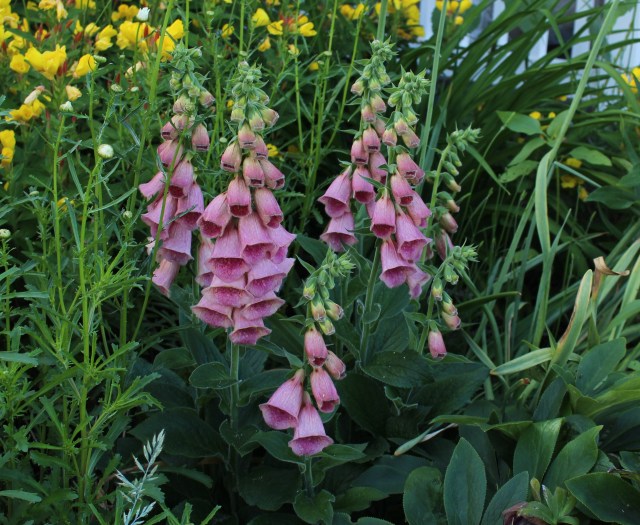I really need to apologize for yet again neglecting comments and neglecting blog visits and for neglecting most of the fun interactions which make blogging so rewarding. I think on Tuesday I went on about how lazy I’ve been lately, but now I’m afraid it’s becoming borderline rude, so for that I apologize. That said I’m not really worried about offending anyone, I think most who read this have their own busy lives which heat up and cool down, but I figured I’d throw it out there just in case. I really do appreciate the interactions.
But it is already late on Thursday and since it’s a day when I like to join up with Kimberley of Cosmos and Cleome for her Thursday’s Feature it looks like another night of post first, blogworld later. Who could blame me for just wanting to sit here for a few minutes before bed and write about Bessera elegans anyway?

The dainty yet boldly colored flowers of Bessera elegans. a bulbous goodie from Southwestern Mexico.
Before I get you too excited, this plant has long, sloppy, narrow leaves which flop all over the ground. The non-hardy, bulblike corms seem to rot easily during winter storage. It doesn’t like cold weather. I’ve seen it referred to as “fussy”. All of these are good enough reasons to plant a marigold instead but then the flowers come and you’re hooked. The color is saturated bright and they hang in clusters at the top of long wiry stems. For as spineless as the foliage is the flower stems never seem to need support, and they hoist the flowers up to dance in any breeze which happens to come through on a hot and muggy summer day. I’ve heard them described as like a red snowdrop, but I don’t see it. To me maybe parachute, umbrella, maybe a little fairy…. I don’t know, it’s a cool form with the long stamens and pistils sticking out of the inner skirt, and before I start sounding too wacky I’ll leave it to you to find a better description 🙂

I didn’t notice the spider lying in wait, but I do notice the odd greenish pollen every time I do a closeup examination of these elegant little flowers.
My bulbs originally came through Brent and Becky’s and the fact I’ve been able to get blooms from it each of the last three years says a lot for its toughness. I’ve always grown them in pots in a well draining potting soil and they seem to appreciate regular water and full sun and just take off during the growing season. The flowers last for a relatively long time and there are several flowers on each stalk. I would almost say they’re easy then, but when winter rolls around the trouble starts. Without revealing how close I’ve come to killing them each winter (last year I was truly amazed those last remaining spots of corm even grew let alone bloomed), I’m just going to say my best success has been keeping them bone dry and on the warm side when in storage… but I’m open to advice on this.
I really have no business adding any more plants which need pampering over winter but such is curiosity. The red version is cheap enough (10 for $6 last time I looked) that one can just plant and abandon them once winter arrives, but there are other colors and of course other colors mean collecting opportunity. I’ve seen mention of crimson, pink, lavender, and a dark purple, each with varying flower sizes and markings, and of course I want to try all of them. Telos Rare Bulbs has the “outstanding” purple form for sale but at $15 a piece I’m reminded of how poorly my current plants survive the winter and it’s taking all my strength of reason to resist. It even says “few available” and that does absolutely nothing to calm me down.
I will wrap it up here. I need to get some rest before someone clicks and orders something they shouldn’t, but in the meantime please consider a visit to Kimberley’s blog and see what others have featured this Thursday. I was fortunate enough to have her pay a visit to my own garden last weekend, and had she not needed to rush off early I’m sure I would have gone on and on about this plant. As it is I’m sorry she missed it 🙂









